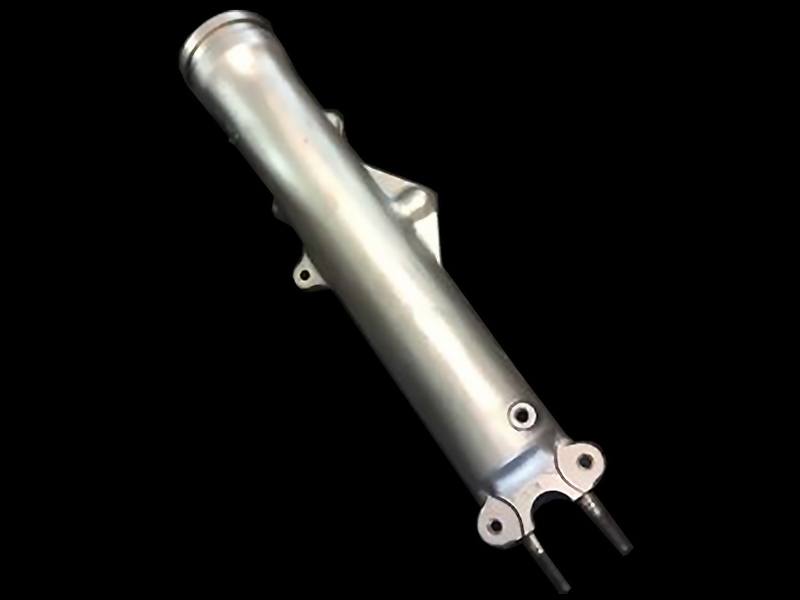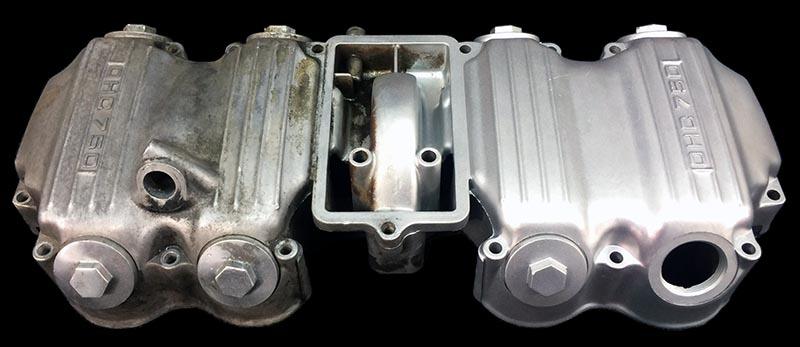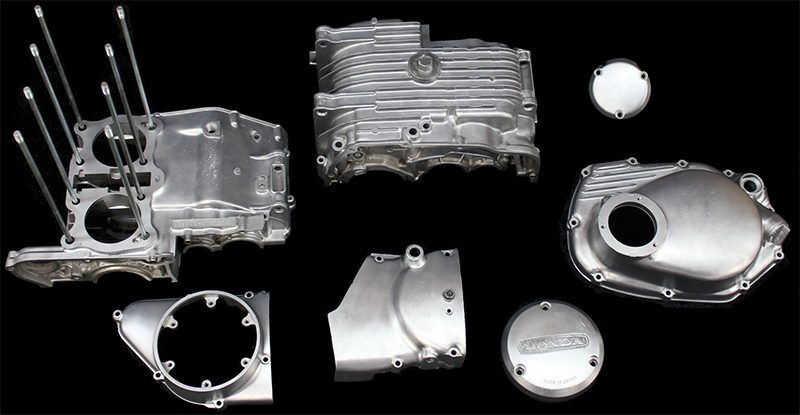Q: What is vapor honing?
Vapor Honing is a semi-abrasive, wet media blasting.
Q: What parts can be vapor honed?
Vapor honing can be used on almost any surface found on a motorcycle or car (including gloss plastic). While it can handle a wide variety of materials it gives an excellent finish to aluminum, zinc, brass, and magnesium. Our favorite application is carbs, for the finish it provides.
On aluminum, it leaves a finish that looks almost like paint. Here's a fork lower that was blasted. If you have concerns with oxidization we can also clear powder coat vapor honed parts. With that being said we haven't had any issues with oxidization. We can blast anything that can fit in our blast cabinet (including your non motorcycle-related parts). Pretty much anything smaller than a bike frame.
Q: How much does vapor honing cost?
The cost of vapor honing varies depending on the size, the condition, and the state of disassembly of your parts. All of these factors influence the amount of time needed to complete the process, and therefore the cost to you for your individual job. Please call or email us for more information, or to have us give you an estimate. We are always happy to help you.


